SNOWSHOE
ROUTES
WASHINGTON
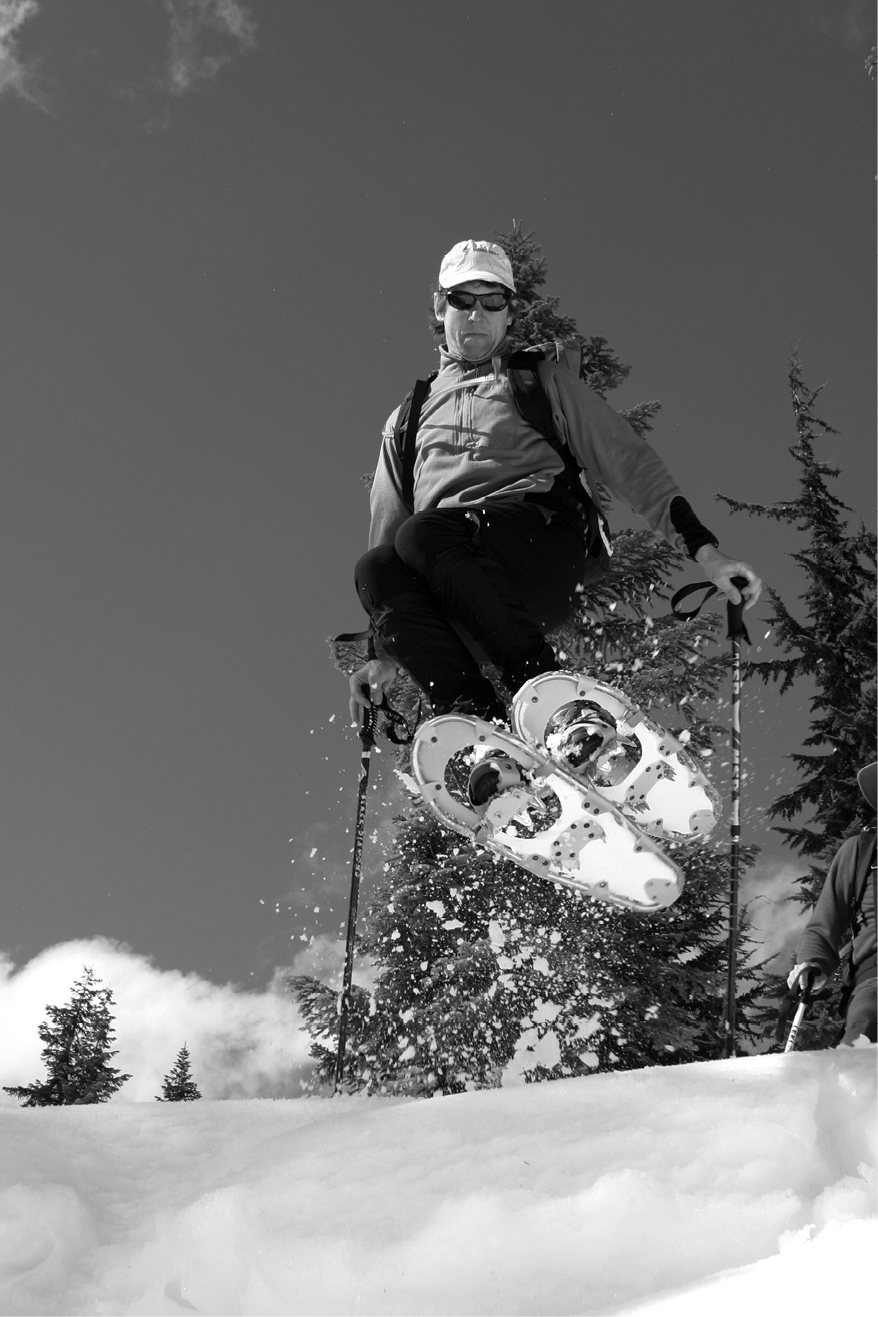
SNOWSHOE
ROUTES
WASHINGTON
THIRD EDITION
DAN A. NELSON


| Mountaineers Books is the publishing division of
The Mountaineers, an organization founded in 1906
and dedicated to the exploration, preservation, and
enjoyment of outdoor and wilderness areas.
1001 SW Klickitat Way, Suite 201, Seattle, WA 98134
800.553.4453, www.mountaineersbooks.org |
Copyright 2015 by Dan A. Nelson
All rights reserved. No part of this book may be reproduced or utilized in any form, or by any electronic, mechanical, or other means, without the prior written permission of the publisher.
Printed in the United States of America
Distributed in the United Kingdom by Cordee, www.cordee.co.uk
Third edition, 2015
Copy editor: Paula Thurman
Design and layout: Jennifer Shontz, redshoedesign.com
Cartographers: Jerry Painter and Jennifer Shontz
Cover photograph: iStock.com/Onfokus
Frontispiece: A happy snowshoer kicks up his heels in the soft snow.
All photographs by the author unless otherwise noted.
Library of Congress Cataloging-in-Publication Data
Nelson, Dan A.
Snowshoe routes, Washington / Dan A. Nelson.Third Edition.
pages cm
Includes bibliographical references and index.
ISBN 978-1-59485-919-9 (trade paper)ISBN 978-1-59485-920-5 (ebook) 1. Snowshoes and snowshoeingWashington (State)Guidebooks. 2. TrailsWashington (State)Guidebooks. 3. Washington (State)Guidebooks. 4. Natural historyWashington (State) I. Title.
GV853.N45 2015
796.9'209797dc23
2015011036
 Printed on recycled paper
Printed on recycled paper
ISBN (paperback): 978-1-59485-919-9
ISBN (ebook): 978-1-59485-920-5
CONTENTS
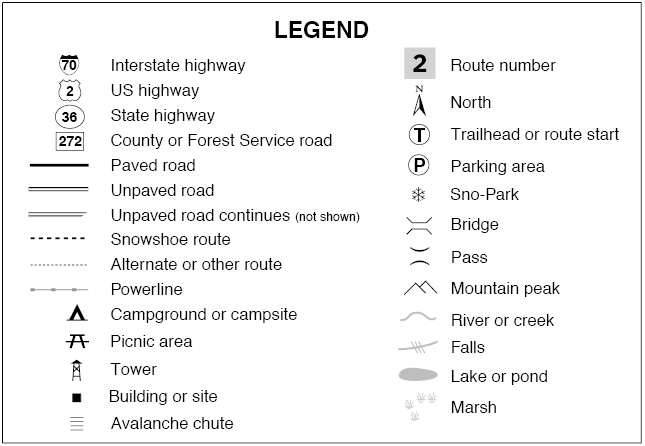
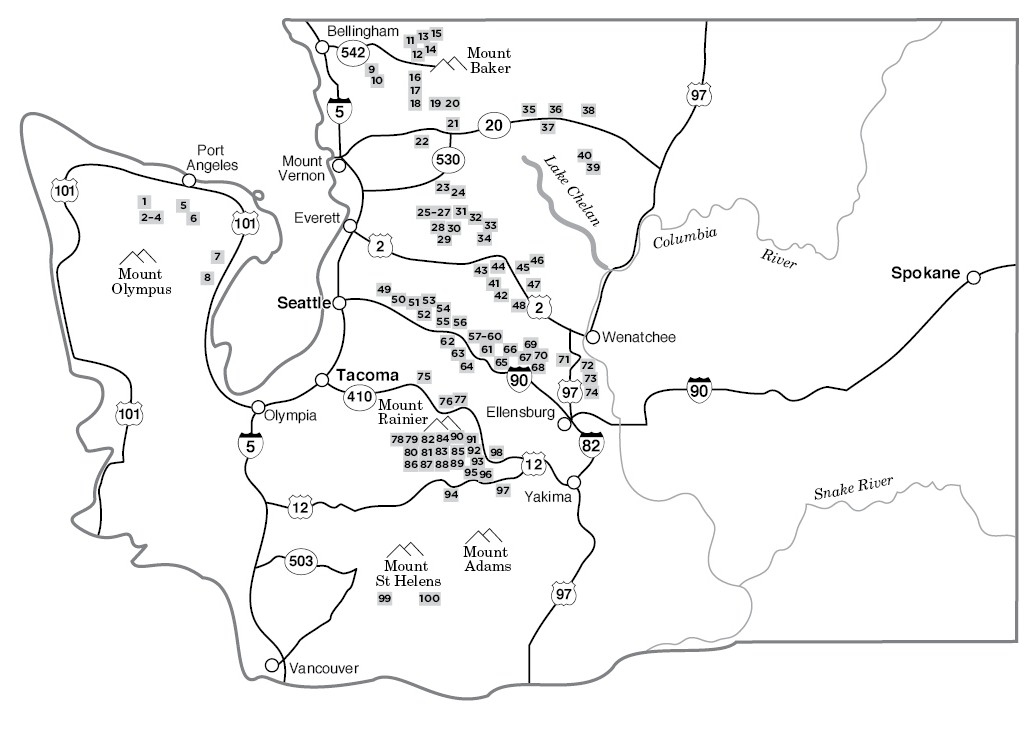
ROUTES AT A GLANCE



* NOTE: EVERY slope is a potential avalanche slope. The ratings merely compare the relative risks of each route. You must evaluate the actual risks on any given day for yourself.
.jpg)
View from the trail up Mount Margaret (Route 59)
PREFACE
In the mid-1990s, the age-old activity of snowshoeing began to boom as a winter sport. As the new millennium dawned, the sport kept growing. Through the first decades of the 21st century, snowshoeing continues to flourish, growing faster than any other winter sport in the Pacific Northwestand throughout the northern states. Part of the reason for that is the tremendous popularity of hiking in the Pacific Northwest. Summer hikers are loath to give up their favorite pastime simply because the seasons change. So, come winter, hikers have two optionsstep onto a pair of cross-country skis or strap on snowshoes. In the past, skis have been the preferred choice for backcountry enthusiasts. But not everyone wants to take the time, or make the considerable effort, needed to master the art of cross-country skiing in mountain country. Snowshoeing has become a popular alternative.
Probably the main reason for this trend is the ease with which beginners can become accomplished snowshoers. Anyone who knows how to walk knows how to use snowshoesjust strap them on and walk, its as simple as that. Another reason snowshoes are increasingly popular is that hikers can get to the same areas in winter that they hike to in summer. They can move easily through thick forests and up steep slopes. Skis, on the other hand, are more difficult to maneuver on forest trails, and uphill slopes pose tougher challenges for novice skiers (although the downhill run is undeniably more fun on skis).
Although hikers can travel many of the same trails on snowshoes that they can in the summer, more often than not the trailheads for those trails are inaccessible by car. Fortunately, the surge in interest in cross-country skiing in the 1970s prompted Washington to build and maintain a series of Sno-Parks throughout the state. These facilities are merely parking lots that are kept cleared of snow and access roads that are kept plowed during the winter. More than one hundred Sno-Parks are maintained for winter recreationists, with no fewer than fifty devoted solely to nonmotorized recreationists.
Cross-country skiers and snowmobilers have utilized these Sno-Parks for nearly four decades. Many of the facilities also feature groomed ski trails, groomed snowmobile trails, and a few even have tracks set for skiers who prefer that mode of skiing.
While the skinny skis and screaming snowmobiles crowd the groomed roads and wide trails leading out of these parking areas, snowshoers can take advantage of the solitude found on the forest trails that angle away from the roads. These snow-laden paths are impossibleif not illegalfor snowmobilers to negotiate and too difficult for the majority of skiers to attempt. But a hiker wearing a pair of modern snowshoes can climb the snowy trail as easily as a hiker can trudge up switchbacks in summer. In fact, snowshoers have a decided advantage over their summer colleagues simply because they can often walk right over the top of many difficult obstaclesthick brush, fallen logs, treacherous talus fields, and so forth. A heavy blanket of snow can level the most difficult field so that in winter, hikers feel like they are hiking through an open meadow, whereas in summer, hikers may find the same area to be an impassable slope of slide alder.
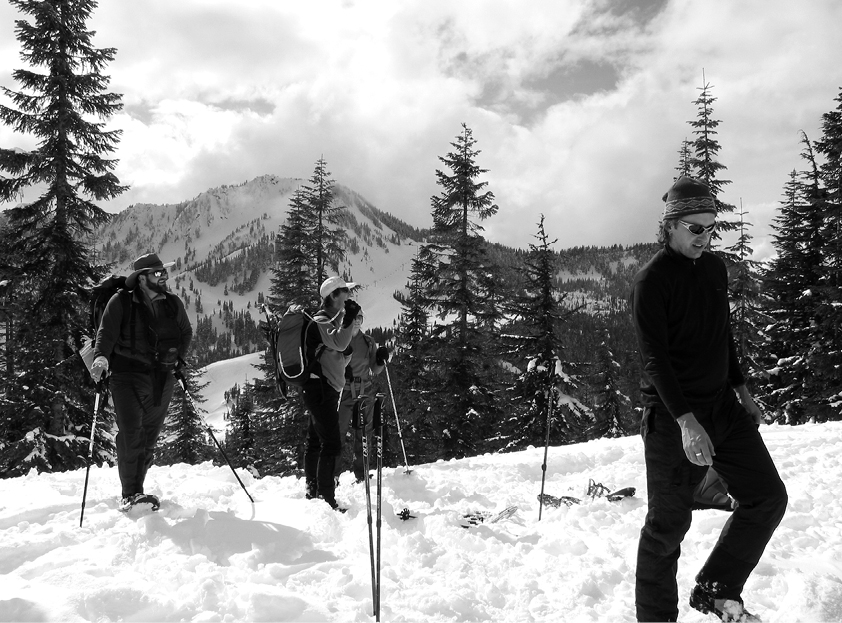
The author (far left) and friends enjoy a rest on a ridge top.
Unfortunately, that blanket of snow can also make finding a specific trail next to impossible. Thats where this book comes in. I have put together one hundred of my favorite winter hikes around Washington and present them here as a means of helping other hikers find the beauty of the winter backcountry without the hassle of trying to pick and choose a route. Of course, the routes I describe here are not as easy to follow as a snow-free summer trail, nor should snowshoers think they have to follow my exact footprints. Part of the mystique and wonder of snowshoe hiking is the ability to explore anywherea route is limited only by a snowshoers physical and mental limits, tempered with a heavy dose of common sense and avalanche awareness.

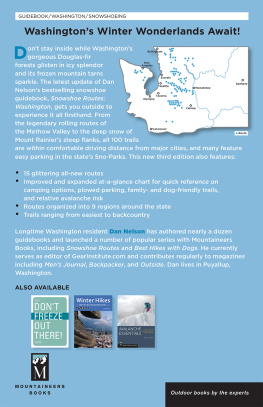






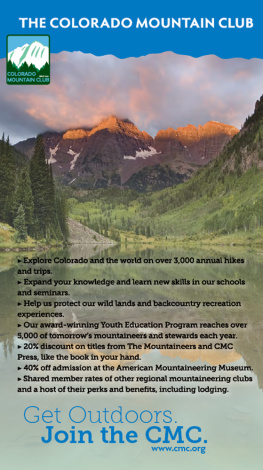

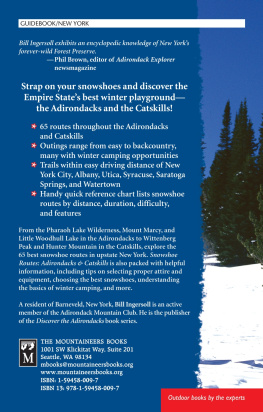

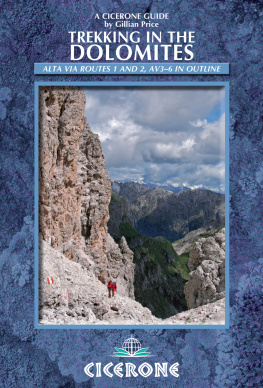

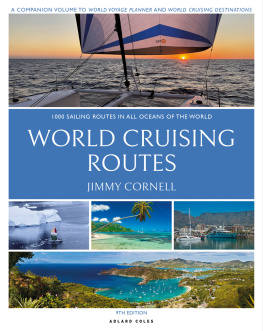
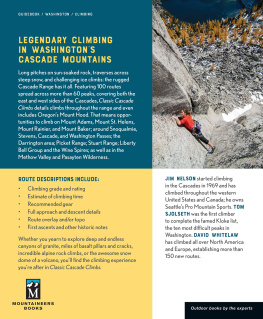
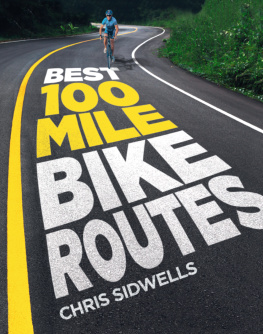
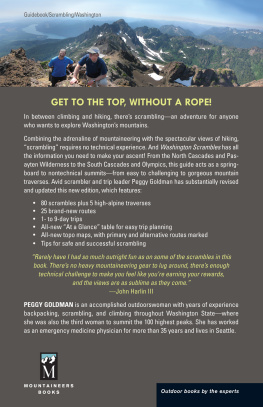






 Printed on recycled paper
Printed on recycled paper




.jpg)
